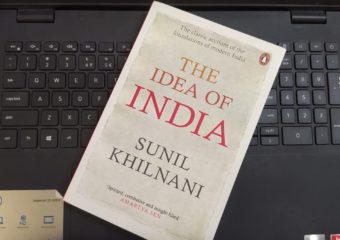Book review: The Idea of India
Sunil Khilnani in his book ‘The Idea of India’ focuses on the idea of India at different stages of history and tries to examine the essential concept of contemporary India, which he considers a democracy. Khilani is a teacher of politics at the University of London. He was born in New Delhi and graduated from Trinity Hall, Cambridge. The author argues that the India that we live in today is an outcome of numerous ideas that were prevalent at different times, right from British Colonial and Nehruvian socialism to the neoliberal state of the 1990s. He stated that this book is his attempt to explain why Nehru is such a pivotal person in the history of contemporary India. This review of Khilnani’s book is from the lens of urban/spatial planning and is more focused on how he depicted the role of historical events, thinkers, and politicians such as Mahatma Gandhi, Subhas Chandra Bose, Bhim Rao Ambedkar, and Jawaharlal Nehru, as well as power, in shaping some of India’s most important cities, including Banaras, Calcutta, Chandigarh, Bangalore, and Bombay. The economic dynamism of cities attracts people from rural India.

From the author’s perspective, industrialization is the first step towards modern India which he believes was accelerated by Nehruvian planning. Nehru promoted industrialization through the constitution of the National Planning Committee which designed Five-Year Plans and policies for the economic development of the nation. The author is trying to insinuate the idea that the development of cities due to the result of industrialization is the product of Nehru’s ideas.
Khilnani aims to analyze the relevance and politics of cities in various historical times in his work. He lays out the roadmap of the ideology behind Indian cities from the pre-independence period- colonial cities to post-independence cities which desperately tried to fade the influence of the British Raj. Those colonial cities were designed to showcase the power and superiority of the British Raj. The first stage colonial cities in the 18th century, including ports of Madras, Mumbai, and Calcutta dedicated to commercial extraction exhibited wealth and linked the nation to the world economy, while the second stage colonial cities in the 19th century were cantonment cities built for defense, sanitation, and order.
With the example of New Delhi, he illustrates how the British Raj used structures and strategic locational-like residential areas for Indian clerks at the periphery without any public transport and British clerks near central acropolis to showcase superior rationality, power, and order. The attempt to nationalize streets by renaming them after national leaders was the first attempt to make the cities free from the colonial impact, however, it was impaired by an excess of commemorative zeal.
In his attempt to showcase the role of Nehru in creating the modern cities (the political influence on cities), he compared two cities- Ahmedabad and Chandigarh which were greatly influenced by the ideologies of Gandhi and Nehru respectively. While the former represents harmony between different religions and economic development through regional politics, the latter gives an example of a modern city conceived as a town free from existing encumbrances of old towns symbolizing free India. While the old city was divided by the avenues of caste, the modern later got divided by the socio-economic status. Nehru’s vision for cities went beyond just roads, parks, and the renaming of streets to education, recreation, employment, and business.
While the book does highlight the Nehruvian vision of urbanization and his impetus to industrialization, through the example of Chandigarh among others, on some level, Khilnani fails to highlight the setbacks and untoward attacks that urbanization and industrialization received in India through Gandhi’s ‘India lives in its villages’ and his staunch opposition to industrialization. The author is successful in his attempt to showcase the influence of politics on the shape and development of cities and how they form the different ideas of India at different levels of history in his discourse. This book is a great read for people who wants to understand how politics dictates the development of cities with examples of some historic cities like Delhi and Chandigarh.
Khilnani left the book with some interesting and mind-striking questions which when applied in designing cities can yield equitable cities. Some of the questions include- Is a country genuinely democratic if a majority of the population, who are poor and illiterate, are excluded from the decision-making process? What would happen if such individuals were included in the democratic process? These questions- in my mind- indicate the importance of participatory planning, which modern planning lacks. While this was not the author’s intention to particularly focus on participatory planning, as a spatial planner, one might want to explore this question while creating policies that shape modern cities.
Author Bio: Manisha Sharma-A graduate student at CEPT University
Related